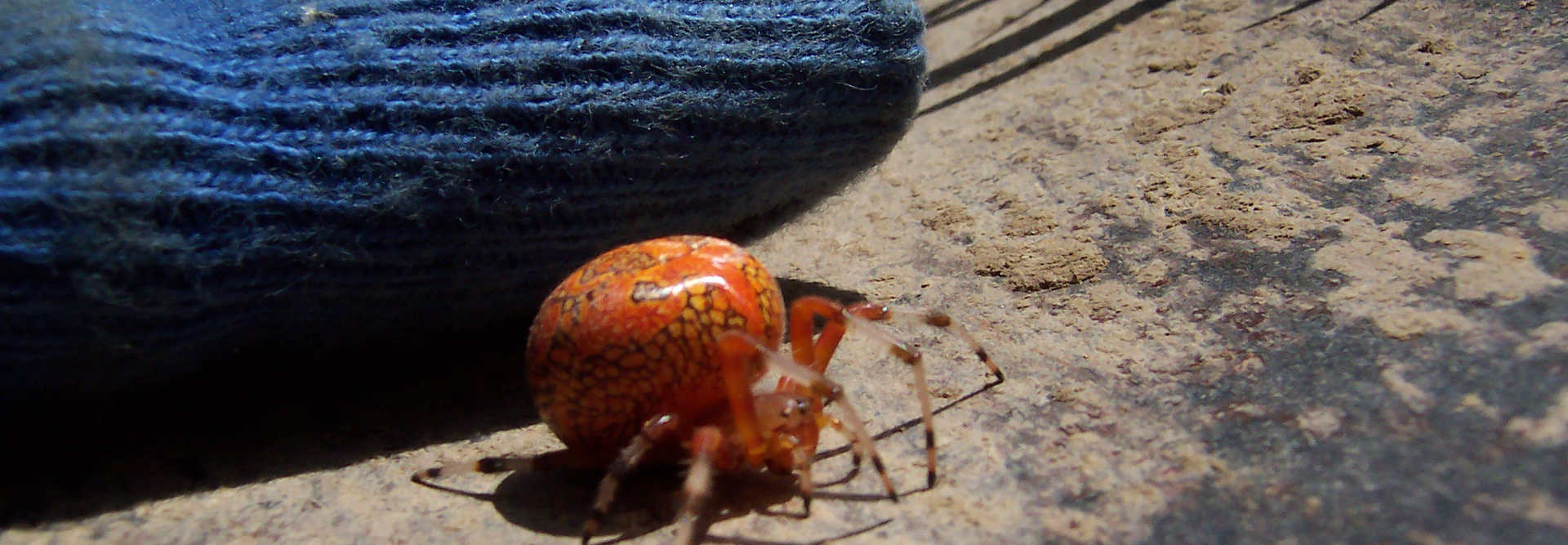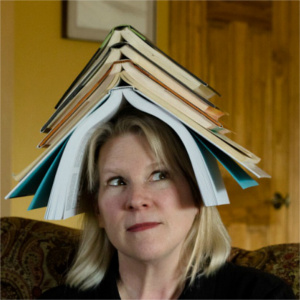Science gets smeared on everything in my family. Yes, occasionally it smells.
A typical dinner table conversation includes what we’d take along if colonizing the moon, how many citrus batteries it might take to start a car, and why Jurassic Park should be remade with quacking dinosaurs.
Science around here is often amusing, like the time we swabbed between our toes and let the bacteria grow in Petri dishes. The “winner’s” dish had such virulent growth that she felt sure it deserved to live. She gave it a name and fed it extra glucose and agar. It quite effectively kept her siblings out of her room. I insisted she throw it away when it began creeping beyond the lid. I am still blamed for the demise of this cherished life form.
Sometimes science is also a covert operation. When she was 13, my daughter engaged in a months-long project observing the decomposition of a muskrat. She followed every protocol she’d read about in forensic texts including measurements and sketches. I didn’t hear about that one for a year or two. Some experiments shouldn’t have happened at all. When he was five, one of my sons quietly carved a small hole in the drywall of his closet, then attempted to spackle it with the unlikely combination of toothpaste covered by an ostrich feather. We didn’t discover it until we were emptying the closet as he packed for college. We still laugh about that one.
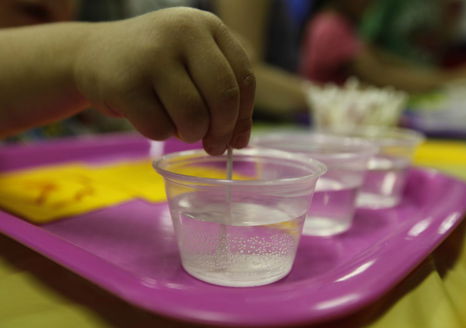
My offspring seem driven to find out. They can’t spot a spider without observing it, identifying it, and then expounding on the hydraulic features that are basic arachnid operating equipment. They discuss all possible angles of a problem, often in such depth that my far more distractible mind drifts off. They tend to walk into a room announcing odd factoids which invariably leads to strange conversations about recently de-classified Russian research, turbocharged engines, or riparian ecology.
Woe to me if I question a postulate put forth by one of my kids. They will entertain my doubts playfully, as a cat toys with a mouse, then bombard me with facts proving their points. I’ve tried to uphold my side in science disputes but it’s pretty much a salad spinner versus the Large Hadron Collider.
Although it looks like a normal house, our home has stacks of books and periodicals (“Who took the neutrino issue of New Scientist?”); tubs overflowing with one son’s beakers, tubing, and flasks; a bedroom that does double duty as a recording studio; and random sounds of saws, welders, and air compressors as something entirely uncommon is being constructed or deconstructed in the garage. Other families have nice normal pictures on their refrigerators. Ours is a posting place for odd information. The longest-running fridge feature here is a card listing the head circumference of every person in the family. By the time the youngest was 11, my head was the smallest.
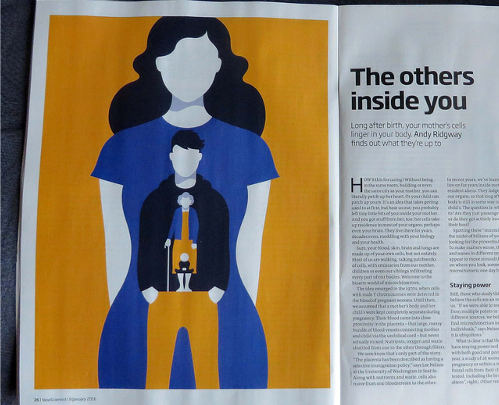
Then there’s the front yard. A headstone leans against the front porch. It has nothing to do with Halloween. Our youngest is teaching himself stone carving using hand tools. This stemmed from his interest in ancient Norse language, myth, and exploration. That led to a study of runes, leading to old runic carvings, well, you get the idea. He’s already carved runes in a few stones. So of course his brother got him a headstone as a birthday present. It’s a great gift, in context.
Also in the yard, a giant sculpture another son welded out of scrap metal. He’s never taken a welding course, or an art course for that matter. No problem. He measured his own limbs to translate into the correct human form. I amuse myself by putting strange hats on this sculpture —- these days it’s wearing a fedora and holding a rusty trumpet. And recently, my daughter spent the afternoon in front of the house cleaning an entire deer skeleton she found in our woods. She was caught up in an exuberant state of flow as she identified bones, scrubbed, and assembled it into the likeness of a very hungry deer. Maybe our front yard is why our mail carrier seems a little wary.
Science shouldn’t be confined to formal study. My husband and I have never worked in science fields. But we’ve found that keeping scientific enthusiasm alive isn’t hard. It’s about an attitude of “yes.” Projects that are messy, time-consuming, and have uncertain outcomes are a form of experimentation. They are real science in action. When kids want to know, they want to find out. Not later, not next week, but right away. This starts in infancy and, if welcomed, can lead to engaged learning throughout life. (Just read any scientist’s biography.)
When my oldest was a baby he was horrified by vacuums. Even the sight of one made him scream with This Will Kill Me volume. So we let him control the Off and On switch. Soon his horror turned to fascination. No, it wasn’t fun to let him turn it on every time he crawled to the closet, but mastering his fear led to all sorts of new fascinations.
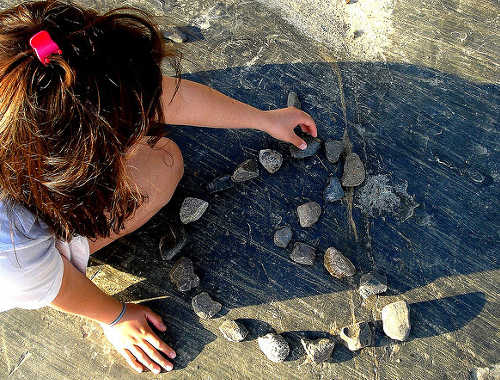
When my daughter was around 11 months old, she was entranced by the stones at the end of our driveway. Day after day she wanted to toddle close to the street just to pick up those stones. It occurred to me that it would be a lot easier to satisfy her curiosity than to keep saying no and turning her back toward the house. So she and I went there together and sat in the stones. I marveled at all the different ways she chose to experience them. Holding, dropping, picking up one at a time then picking up handfuls, handing them to me and taking them back, rubbing the smooth ones and, once I showed her, holding them up to the light. Sometimes she’d raise a stone to her mouth, then shake her head, reminding herself that stones weren’t for eating. Once or twice a stone did touch her lips. The result? I gently told her we were all done, picked her up, and went back to the safety of the lawn near the house. She remembered. I let her investigate stones day after day until she was done, her desire to know satisfied.
When one of my boys was three he was entranced by the lighters and matches his grandmother used to light her cigarettes. Since she lived with us and on occasion unintentionally left those fire generating devices out, his intense curiosity concerned me. He knew that children shouldn’t touch anything that makes fire, but he was so intensely active that I knew it was a matter of time before her forgetfulness might collide with his urge for some hands-on experience. So, explaining this was only okay to do with an adult, I stood him on a stool at a sink full of water, letting him light match after match to drop in the water. He was a little afraid. His fingers were almost singed a few times. He also satisfied an interest in fire that could easily have compelled him to disobey. He asked a few times over a period of months to do this again. Then he was done. Warning about danger doesn’t have the same effect as a child getting close enough to know that matches do indeed burn.
You know how some kids are considered “bright?” I don’t think it has anything to do with IQ or test scores. A natural human quality — curiosity — is a light every one of us carries from our earliest childhood. Kept alive, it burns ever more brightly without burning out.
If you enjoyed this article and feel called to give back to ASDE, here are ways you can support our work:
- Donate money
- Share our content with others! Click one of the buttons above to easily share on Twitter, Facebook, or email.
- Consider becoming a Contributor for Tipping Points
Tipping Points Magazine amplifies the diverse voices within the Self-Directed Education movement. The views expressed in our content belong solely to the author(s). The Alliance for Self-Directed Education disclaims responsibility for any interpretation or application of the information provided. Engage in dialogue by reaching out to the author(s) directly.


